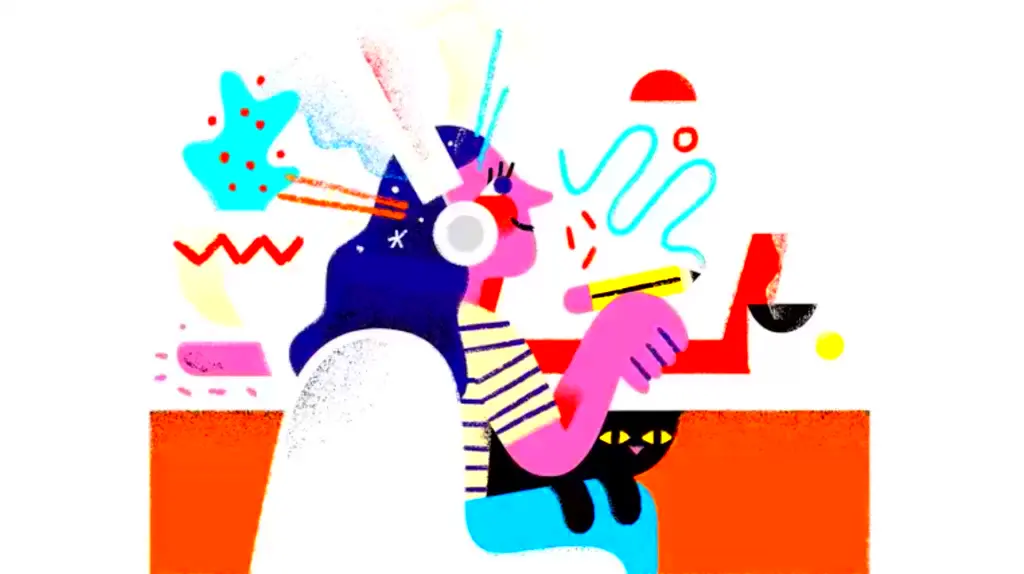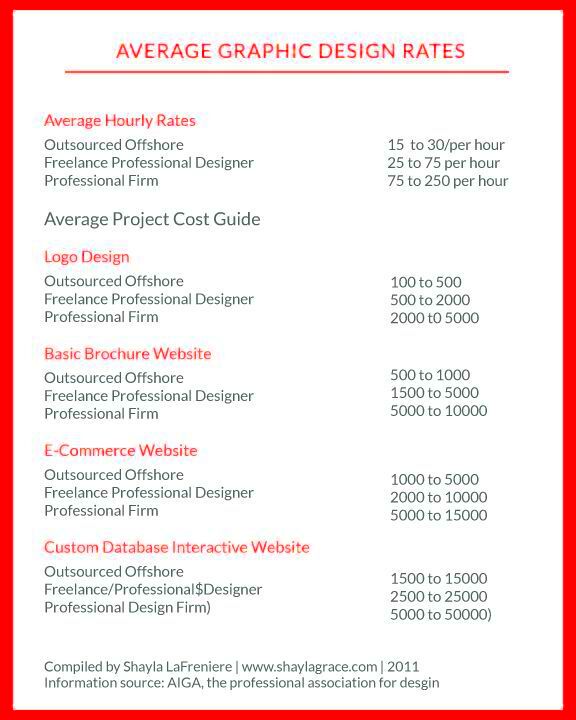When I kicked off my journey as a logo designer I found it challenging to figure out how to price my services. It’s not solely about the hours you invest but rather the worth you add to the equation. Clients aren’t simply shelling out money for a logo; they’re investing in your ingenuity, expertise and capacity to transform their ideas into something truly one of a kind.
Its incredibly satisfying to realize that your creations reflect a companys image. Youre not merely drawing a concept; you play a role in defining a brands persona. Therefore as you begin to set a value on your work consider the lasting impression you make on that client. Your artwork could be viewed by countless individuals or even millions.
Key points to consider:
- Your experience and skills are valuable assets.
- Each logo is a unique creation that holds meaning for your client.
- Remember that your work impacts the brand’s future.
Factors That Affect Logo Design Pricing

I’ve come to realize that pricing isn’t something that can be applied universally. There are various factors that influence the decision on how much to charge for a logo design. In my early days I would set a fee without taking the details into account. However I quickly understood that every project comes with its own set of challenges.
Here are a few factors that can impact your pricing strategy.
- Complexity of the design: A simple logo with fewer elements will naturally cost less than an intricate design.
- Turnaround time: If a client wants a rush job, it’s fair to charge extra for the quicker delivery.
- Client’s budget: While it’s important to understand the client’s budget, never undervalue your work to fit their pocket.
- Number of revisions: Some clients might need multiple changes, so factoring in revisions is key.
- Your experience: A seasoned designer can justifiably charge more than someone starting out.
Feel free to have discussions with your clients regarding these aspects. It fosters trust and makes sure that both parties are aligned.
Also Read This: Why YouTubers Make Fun of Fiverr: Insights from Reddit
Comparing Hourly vs Project-Based Rates

When I started my freelancing journey one of the toughest decisions I had to make was whether to bill clients on an hourly basis or provide a set fee for the entire project. To be honest each method has its advantages and disadvantages and I've had to navigate through some bumps along the way to discover what suits me, best.
Hourly Rate: When you’re unsure about how long a project might take, charging by the hour can seem like a safer option. It also works well for ongoing projects with a lot of revisions. However, clients may feel nervous if they don’t have a clear picture of the final cost.
Project-Based Rate: This is my preferred method, especially when I’m confident about the scope of work. Clients appreciate knowing exactly what they’ll be paying upfront. The challenge here is making sure you factor in potential revisions and additional work that might pop up unexpectedly.
Here's how I see the comparison:
| Hourly Rate | Project-Based Rate |
|---|---|
| Great for uncertain or evolving projects | Better for well-defined projects |
| May lead to higher total cost for client | Gives clients a fixed cost upfront |
| Can be less predictable for both parties | Allows better time management for designer |
In my opinion I tend to use a combination of approaches based on the specific project. However I have noticed that charging a fee for a project fosters greater trust and reassurance among clients.
Also Read This: Can You Make a Living Off Fiverr?
How to Set a Minimum Fee
In the early days of my freelance journey I was so keen to land projects that I would accept almost anything even if the pay was laughably low. However as time went on I came to understand that establishing a fee isn't solely about earning a livelihood; it's also about valuing your own contributions. By setting a fee you safeguard your time and creative energy ensuring that you don't stretch yourself thin for less than what you truly deserve.
Consider it like this you have a finite amount of time and you cant accept every opportunity that comes your way. If you dont establish a starting price you might end up feeling overwhelmed and possibly even harboring negative feelings towards clients. Trust me I know from experience and its not an enjoyable situation to be in.
How to decide your minimum fee:
- Calculate your living expenses. You need to ensure your earnings cover your basic needs like rent, food, and bills.
- Factor in business expenses like software, marketing, and taxes.
- Decide how much time you can dedicate to freelancing and divide your monthly income goal by the number of hours or projects you can realistically handle.
- Consider your experience. The more skilled you are, the higher your minimum fee can be.
Recognizing your value and expressing it to potential clients can be a boost. Eventually this will help you weed out clients who dont appreciate your work and shift your attention towards those who do respect your abilities.
Also Read This: Is Fiverr a US Company?
Considering Client Budgets Without Undervaluing Your Work
There was a period when I would go to great lengths to accommodate a clients budget believing it was preferable to having no project whatsoever. However I realized that this approach only resulted in exhaustion and disappointment. Striking a balance between client budgets and recognizing the worth of your own work is essential in freelancing. It’s not solely about the financial aspect; it’s about maintaining harmony.
When clients approach you with financial constraints it's crucial to pay attention. Take the time to grasp their requirements and restrictions while also asserting the value of your work.
Here’s how I handle these situations:
- Break down the work: Show the client what goes into creating the logo. When they see the time, effort, and creativity involved, they may understand why the cost is justified.
- Offer tiered options: Sometimes, clients may not need a full-service package. Offering different pricing tiers gives them flexibility while still allowing you to get paid fairly.
- Be willing to negotiate: While you shouldn’t undervalue yourself, there’s room for compromise. Maybe you can scale back the project to fit their budget while still maintaining the quality of your work.
Ultimately it’s about striking a balance that leaves both you and the client satisfied with the outcome of the project.
Also Read This: What is a Data Chart in Fiverr?
Should You Offer Discounts for Bulk Orders
I frequently receive this question and to be honest, it varies depending on the circumstances. Providing discounts for orders can be beneficial if handled thoughtfully. In the stages of my career I eagerly seized every chance to offer discounts believing it would lead to increased business. However as time went on I came to understand that if not executed strategically it can diminish the perceived value of your service.
When to consider offering a discount:
- If the client is ordering multiple logos or services at once, a discount can make sense. But ensure it’s a win-win for both sides.
- For long-term clients, offering a discount shows appreciation for their loyalty and could strengthen the relationship.
- Use discounts as a way to fill in slow periods without lowering your standard rates too much.
When to avoid discounts:
- If offering a discount will lead to burnout or make you feel resentful about the workload, it’s better to avoid it.
- Discounts shouldn’t become the norm. They should be occasional, not expected.
In the end providing discounts for purchases can be a smart move. However it’s crucial to ensure that the discount doesn’t compromise the quality of your work or disrupt your overall pricing approach.
Also Read This: How Long Do You Have to Cancel a Fiverr Order?
Negotiating Prices with Confidence
In the past I used to hate haggling over prices. It made me uneasy to think that a client might back out if I asked for too much. However as I gained experience I discovered that having in pricing stems from recognizing your value and being ready for the discussion. Its not about selling a logo; its about sharing your knowledge, time and creativity. If you dont hold it in high regard why would anyone else?
I used to think of negotiations as a fight but now I see them as a chance to talk things out. This is my current approach to them.
- Stay calm and professional: It’s easy to feel defensive when discussing money, but staying calm shows that you know what your work is worth.
- Be prepared to explain your rates: Sometimes clients just need to understand why you charge what you do. Break down your process, explain the time and effort involved, and they’ll often appreciate your transparency.
- Don’t be afraid to walk away: This was a tough lesson, but sometimes walking away from a low-paying client is the best decision. It frees you up for better opportunities.
Confidence stems from recognizing the value you bring to the table. Believe me when I say that the clients will appreciate that. If they dont they likely arent the type of clients youd want to partner with for the haul.
Also Read This: How to Start Your Career as a Freelance eCommerce Consultant
FAQs About Logo Design Pricing
When clients reach out to me for logo design there are a few questions that tend to pop up consistently. I’ve found that tackling these frequently asked questions right from the start not only helps set expectations but also fosters trust with the client. Here are some of the ones I encounter most often,
- Why do logo design prices vary so much? – The price of a logo depends on the designer’s experience, the complexity of the design, and the scope of the project. Some logos are simple, while others require extensive research and multiple revisions.
- Do you charge for revisions? – I include a few revisions in my standard package, but if a client needs more than that, I charge a little extra. It’s important to set that boundary to avoid endless changes.
- How long does it take to design a logo? – This depends on the complexity and the client’s feedback speed. Typically, it can take anywhere from a few days to a couple of weeks.
- Can I get a refund if I don’t like the logo? – I don’t offer refunds once the design process starts, but I ensure that we have a clear understanding of the client’s vision before beginning. This helps avoid dissatisfaction.
- Do you offer any discounts for bulk orders? – Yes, for clients who need multiple designs, I sometimes offer a discount depending on the project size.
Conclusion on Setting Logo Design Fees
Determining the charges for your logo design involves more than crunching numbers. Its about recognizing the worth of your craft and being at ease conveying that worth to your clients. Through my experiences I’ve come to realize that setting prices is more an art than a precise formula. It requires some time to discover what suits you best but once you find it it brings a sense of liberation.
The key takeaway here is to avoid downplaying your worth. I’ve witnessed numerous skilled designers exhaust themselves by accepting an excessive workload for minimal compensation. Steer clear of falling into that pattern. You should be rewarded for the time, energy and ingenuity you invest. Keep in mind that your contributions play a role in advancing a business. That value is immeasurable.
Confidently establish your prices engage in negotiations when needed and never forget your value. The clients will recognize your expertise and compensate you accordingly.




